A race to save caves full of treasures
Updated: 2013-07-18 11:09
By Deng Yu in Seattle (China Daily)
|
|||||||||
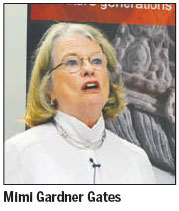
During a conference at Microsoft's main campus in Redmond, Wash, on Wednesday, Wang Xudong, executive director of Dunhuang Academy, talked about how digitalization helped preserve Dunhuang's heritage and allows future generations to enjoy 1,000 years of art and splendor.
The Mogao grottoes he was referring to in Dunhuang, Gansu province were China's first UNESCO World Heritage Site and gained global recognition for their collection of Buddhist artworks - more than 2,000 colorful sculptures and 45,000 square meters of frescoes in 735 caves carved along a cliff by worshippers.
The cliff, murals and sculptures are all very fragile, and increasing visitors to the Mogao grottoes all pose special challenges to Wang's conservation efforts.
"The Dunhuang grottoes preservation and protection are important," Wang said. "Digital Dunhuang gives us hope: it can not only permanently save a world-class cultural heritage, but it can also make it available for scholars and the public to enjoy.
"In 1979 we had 40,000 visitors," Wang said. "Last year we had 800,000. Ironically, the increasing number of visitors has accelerated the deterioration of the frescoes.
"We realized that if we could create digital images of these works, it would not only best deal with the paradox, but it would protect the heritage for future generations," Wang said.
With the help of Northwestern University and funds from the Andrew W Mellon Foundation they had digitalized all of the frescoes in 22 caves by 2006.
In 2008, Microsoft Research Asia joined the collaboration with its "e-Heritage" project.
"The project is aimed at preserving the past for the future by applying the latest research to protect and promote ancient arts," said Hsiao-Wuen Hon, managing director of Microsoft Research Asia.
As part of the e-Heritage project, Microsoft Research Asia created and donated the gigapixel camera system Aspara to Dunhuang Academy in 2011.
This cutting edge technology made it possible to digitalize the niches formed for the statues and photograph the grottoes in finer detail.
The Aspara can generate images more than 1 gigapixel (1,000 megapixels) large (commercial digital cameras produce images of less than 160 megapixels).
"Microsoft Research Asia will continue to support the project as our scientists and researchers are happy to see our research and technology being transferred to reality with this great project," Hon said.
"With Microsoft's help, we expect to complete the digitalization of 148 caves in the next five years," Wang said.
So far, 52 caves and 10,800 square meters of frescoes have been digitalized in Dunhuang.
"Dunhuang is a treasure for all mankind," said Mimi Gardner Gates, founder and chairman of the Dunhuang Foundation.
Gates, who was director of the Seattle Art Museum for 15 years (1994-2009), is a scholar of Chinese art. She has been to the Mogao caves many times since 1995 and has decided to make the conservation of the site her priority. She formed the Dunhuang Foundation in 2011 to support the world heritage site at Dunhuang and other Silk Road treasures in Northwest China.
"Digital technology also gives Dunhuang studies interdisciplinary collaborative research opportunities," Wang said. "This work is quite slow. The capture technology has been basically solved, but the stitching, integration, storage and post-processing techniques such as color management all rely on manual labor."
lindadeng@chinadailyusa.com
(China Daily USA 07/18/2013 page1)
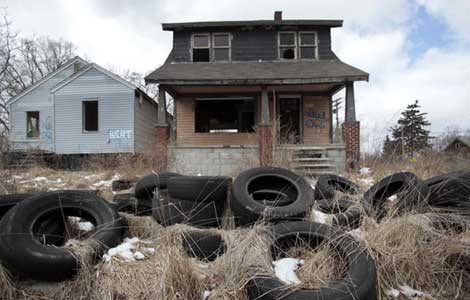
 Detroit files biggest ever US municipal bankruptcy
Detroit files biggest ever US municipal bankruptcy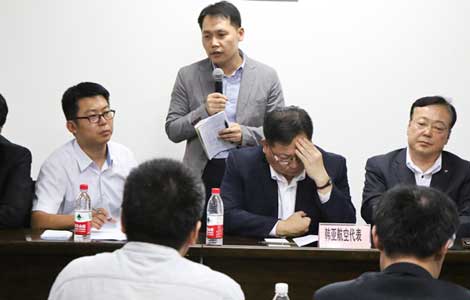
 Plane crash victims' parents seek answers
Plane crash victims' parents seek answers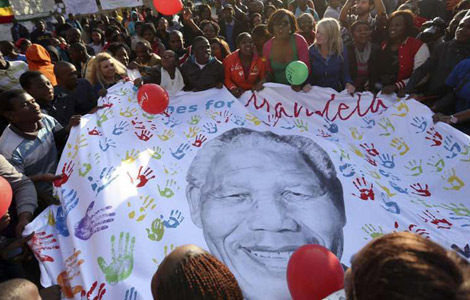
 'Improving' Mandela marks 95th birthday
'Improving' Mandela marks 95th birthday
 Qingdao eatery finds use for pesky seaweed
Qingdao eatery finds use for pesky seaweed
 From university campus to boot camp
From university campus to boot camp
 FIFA head: World Cup in Brazil could be mistake
FIFA head: World Cup in Brazil could be mistake
 Bomber as rock star? Rolling Stone cover outrage
Bomber as rock star? Rolling Stone cover outrage
 German band performs with 3D stage set
German band performs with 3D stage set
Most Viewed
Editor's Picks

|
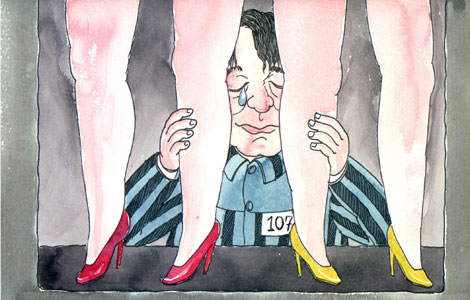
|

|

|

|

|
Today's Top News
Obama weighs canceling Moscow talks with Putin
Pentagon to field 4,000-person cyber squad
NSA implements new security measures
Detroit files biggest ever US municipal bankruptcy
China's Sansha city dock begins operating
Yuan: Collateral types to expand
Autopsy ordered for Hunan fruit seller
Plane crash victims' parents seek answers
US Weekly

|

|







